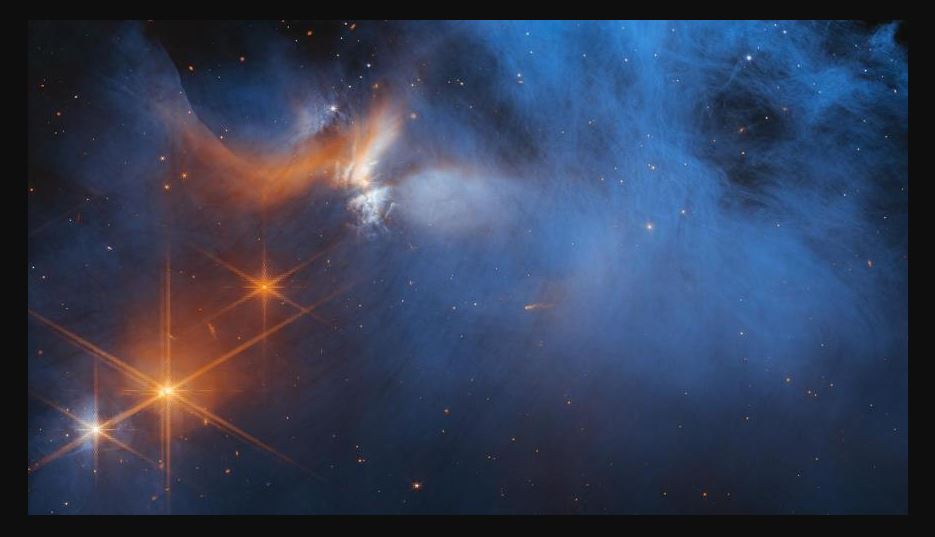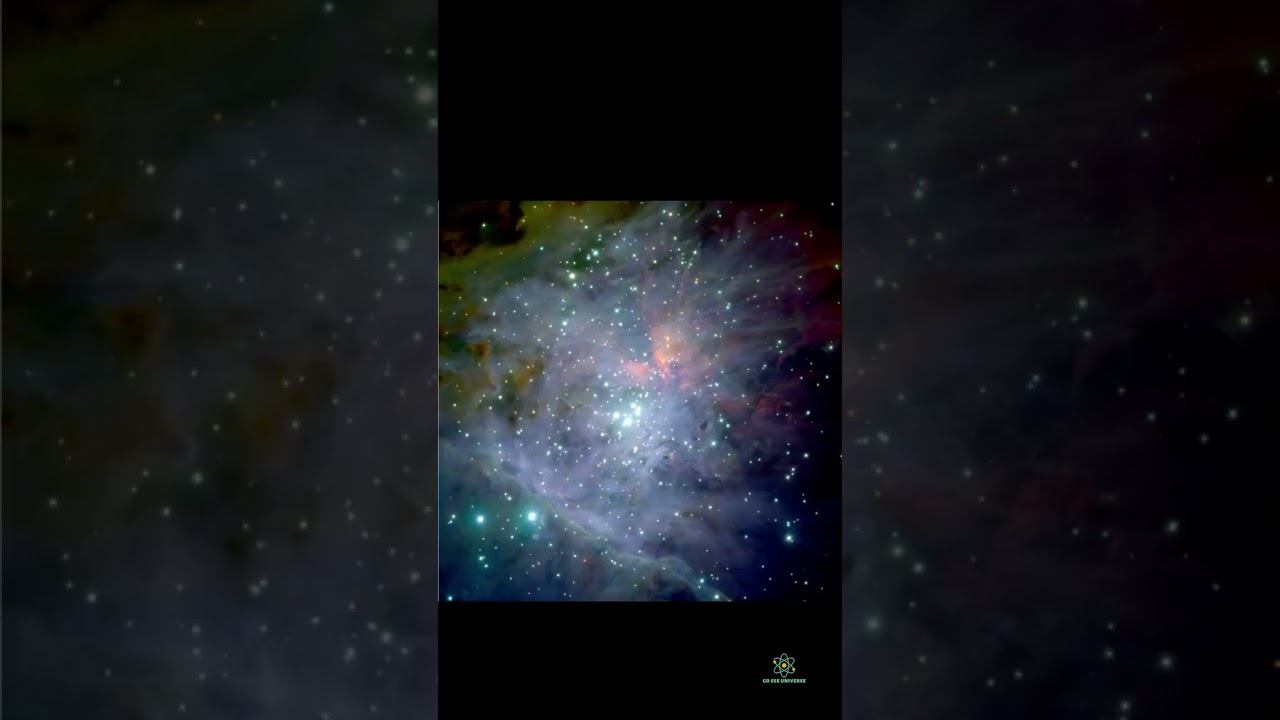Webb Telescope Gazes Deep Into The Icy Core Of A Space Cloud
Webb telescope gazes deep into the icy core of a space cloud inside a wispy molecular cloud 630 light-years away. The James Webb Space Telescope saw ice made of different elements.
Author:Camilo WoodReviewer:Dexter CookeJan 24, 2023360 Shares180.1K Views

Webb telescope gazes deep into the icy core of a space cloudinside a wispy molecular cloud 630 light-years away. The James Webb Space Telescope saw ice made of different elements.
Molecular clouds are groups of gas and dust in space where molecules of hydrogen and carbon monoxide can form. Protostars, which are young stars, can form when clumps of matter in these clouds fall apart.
The Webb telescope focused on the dark molecular cloud Chamaeleon I, which looks blue in the new picture. Ced 110 IRS 4 is a young protostar that glows orange to the left. Monday, the image was part of a study that was published in the journal Nature Astronomy. More orange dots show how light from stars in the background is breaking through the cloud. Astronomers were able to figure out what kinds of molecules were frozen in the Chamaeleon I dark molecular cloud, which is making dozens of new stars.
The Webb telescope uses infrared light, which is invisible to the human eye, to look at the universe. Infrared light can show things about the universe that were previously hidden. It can also see through dense clouds of gas and dust that would otherwise block the view.
Astronomers have used the space observatory to find many different kinds of ice in the darkest parts of a molecular cloud. During their study of the cloud, a group of scientists from around the world found water ice and frozen forms of ammonia, methanol, methane, and carbonyl sulfide. These icy molecules could help make stars and planets, as well as the building blocks of life.
Ices can give planets carbon, hydrogen, oxygen, nitrogen, and sulfur. These elements are used to make amino acids, sugars, and alcohols, as well as to make the atmospheres of planets like Earth.
In a statement, Melissa McClure, an astronomer and assistant professor at Leiden Observatory in the Netherlands and the lead author of the study, said:
“„Our results provide insights into the initial, dark chemistry stage of the formation of ice on the interstellar dust grains that will grow into the centimeter-sized pebbles from which planets form in disks. These observations open a new window on the formation pathways for the simple and complex molecules that are needed to make the building blocks of life.- Melissa McClure, an astronomer and assistant professor at Leiden Observatory in the Netherlands and the lead author of the study

Webb Telescope Peers Into The Frozen Heart Of A Space Cloud | NASA |#shorts |#tiktok
How Planetary Birth Works
The researchers found evidence of both simple molecules and molecules with more parts. In a statement, study coauthor Will Rocha, an astronomer and postdoctoral fellow at Leiden Observatory, said:
“„Our identification of complex organic molecules, like methanol and potentially ethanol, also suggests that the many star and planetary systems developing in this particular cloud will inherit molecules in a fairly advanced chemical state. This could mean that the presence of precursors to prebiotic molecules in planetary systems is a common result of star formation, rather than a unique feature of our own solar system.- Will Rocha, an astronomer and postdoctoral fellow at Leiden Observatory
Astronomers used the way that starlight got filtered by the cloud to look for chemical fingerprints and figure out what the elements were.
“We simply couldn’t have observed these ices without Webb,” said Klaus Pontoppidan, a co-author of the study and project scientist for Webb at the Space Telescope Science Institute in Baltimore.
“The ices show up as dips against a continuum of background starlight. In regions that are this cold and dense, much of the light from the background star is blocked, and Webb’s exquisite sensitivity was necessary to detect the starlight and therefore identify the ices in the molecular cloud.”
Jump to

Camilo Wood
Author
Camilo Wood has over two decades of experience as a writer and journalist, specializing in finance and economics. With a degree in Economics and a background in financial research and analysis, Camilo brings a wealth of knowledge and expertise to his writing.
Throughout his career, Camilo has contributed to numerous publications, covering a wide range of topics such as global economic trends, investment strategies, and market analysis. His articles are recognized for their insightful analysis and clear explanations, making complex financial concepts accessible to readers.
Camilo's experience includes working in roles related to financial reporting, analysis, and commentary, allowing him to provide readers with accurate and trustworthy information. His dedication to journalistic integrity and commitment to delivering high-quality content make him a trusted voice in the fields of finance and journalism.

Dexter Cooke
Reviewer
Dexter Cooke is an economist, marketing strategist, and orthopedic surgeon with over 20 years of experience crafting compelling narratives that resonate worldwide.
He holds a Journalism degree from Columbia University, an Economics background from Yale University, and a medical degree with a postdoctoral fellowship in orthopedic medicine from the Medical University of South Carolina.
Dexter’s insights into media, economics, and marketing shine through his prolific contributions to respected publications and advisory roles for influential organizations.
As an orthopedic surgeon specializing in minimally invasive knee replacement surgery and laparoscopic procedures, Dexter prioritizes patient care above all.
Outside his professional pursuits, Dexter enjoys collecting vintage watches, studying ancient civilizations, learning about astronomy, and participating in charity runs.
Latest Articles
Popular Articles